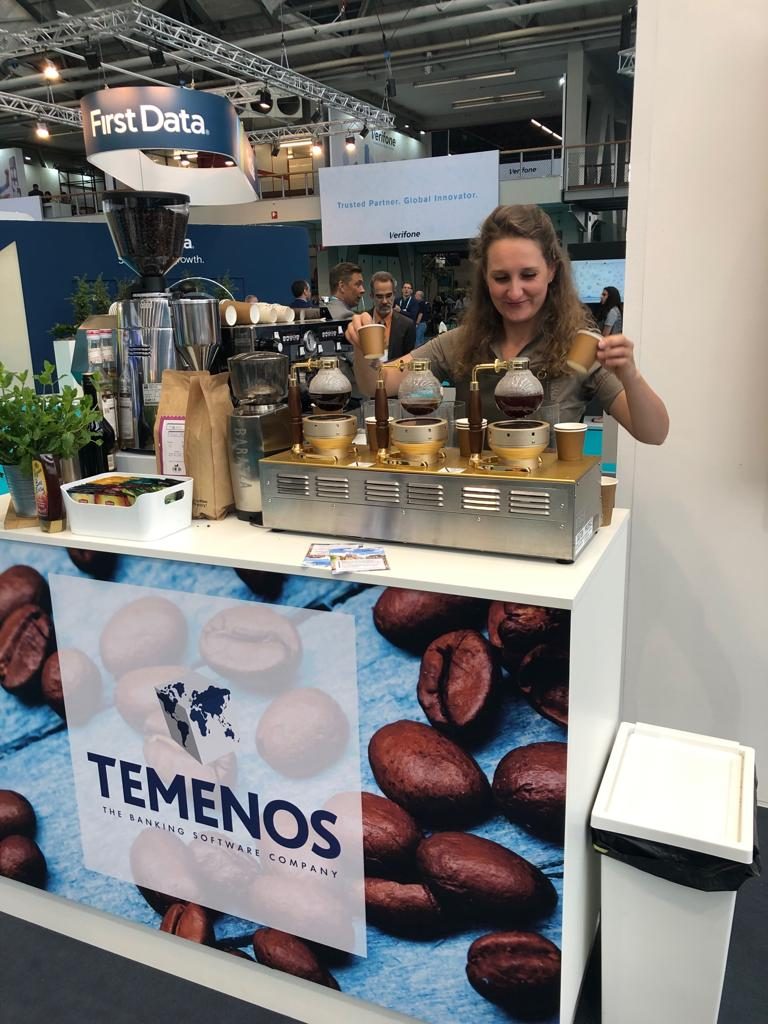Money20/20 Europe 2019 – Day 3, specialisation and invisible banking
Among payment providers, all focusing on front end experiences, core banking providers stand out. The talk of the town is front-end experiences and implementations of consumer experiences, and it’s easy to forget what makes all this possible.
Temenos is one such enablers. Kam Chana, senior digital strategist; and Dharmesh Mistry, the firm’s chief digital officer, welcome me to their stand clearly comfortable with how the day has turned out.
“We have seen a lot of banks approaching us – I’ve met with most of the big ones here, which is great,” tells us Mistry. “I think word has spread, about our work with banks recently, and how we have helped them develop digital banking solutions that have proved agile and efficient”.
Chana mentions Praxia in Greece, Varo Money in the US, and Volt Bank in Australia. She tells us that it only took this latest one five months of implementation. That’s much quicker than any other in the competition, she claims.
The firm’s chief digital office, unsurprisingly, believes that the future of banking is indisputably digital, and those who specialise will have the best success. Temenos, he says, specialises in building one digital platform for banks – only one, not more, dedicating all resources to it.
Starling, a UK-based challenger bank and tech firm on-the-side, sent its CEO Anne Boden to the event, to preach and celebrate the company’s leap to become a tech platform. Mistry doesn’t fully agree with this move.
“By diversifying like that, you’re just wasting resources and time. Starling should focus on banking, and leaving banking tech to specialists, who have been doing this for much longer. It will never be able to provide the level of agility and adaptability that we can.”
But that’s not the only problem in the banking industry nowadays. A much more pervasive one is the obsession of certain banks to attempt to deliver products regardless of the user’s needs. As Chana puts it, by making it product-centric, we are forgetting about whether our customer actually needs it or not.
Mistry exemplifies this with transport. A person wouldn’t just buy a car to go to work. It very much depends on what their budget is, where they live, what the available options are, what the distance is etc. Maybe pooling is better, maybe using public transport is the way to go. By eliminating these options we’re making a choice for them that they will be unhappy with.
The bank’s goal should be to achieve the level of flexibility and adaptability to cater to a customer’s needs in real-time. According to Chana, this would stop banks from having the anachronistic image of a hassle and complication, but rather a seamless service aimed at supporting and enhancing the customer’s life. She’s sure that artificial intelligence and machine learning are the way to go.
And most importantly, a bank ought to do that without the customer even realising. This is the so-called “invisible banking”, where your financial life is catered for, but you barely notice.
A great example of the merger between the day-to-day life and banking is Coconut, as highlighted by Mistry. It offers a product for freelancers that encompasses all the workflow needs that one may need. However, it is all underpinned by a bank account.
For more insights on these and other hot topics, check out our earlier coverage of Money20/20 Europe 2019, where we talk about consumer-centric yet fragmented world, becoming “less spaghetti-bowl“, and more!












































